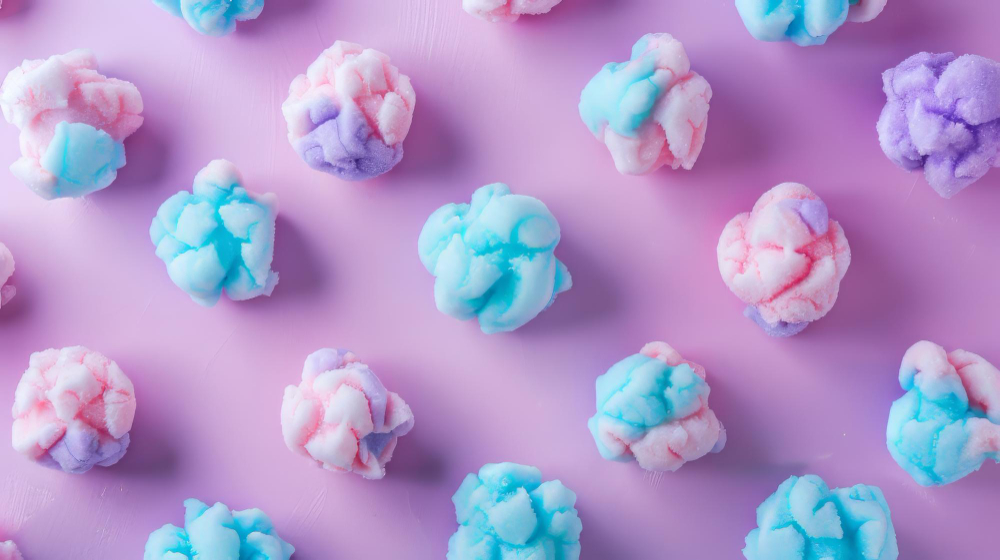Is there anything worse than biting into a delicious-looking piece of fudge only to be met with a grainy surprise? If you’re wondering how to keep your candy creations smooth and irresistible, you’ve come to the right place. The secret often lies in how you treat sugar crystals, those tiny troublemakers that seem determined to wreak havoc on your dessert dreams. Using the right fats, like butter, can help keep your candy texture creamy and free from graininess.
Pay close attention to the temperature when making candy to avoid turning your sweet treat into a sandpaper special. Cook the mixture to the exact right temperature, not a degree higher or lower, for the ideal fudge texture. A handy candy thermometer is your new best friend in this war against the grainy menace, ensuring your confections don’t turn into gritty disasters.
Aside from technique, the ingredients you choose can make or break your candy’s texture. The right mix helps keep sugar crystals in check. With helpful tips and a dash of humor, you’ll learn just how to prevent the terrifying and all-too-common grainy texture in candy. Ready to create candies that have people sneaking back for seconds?
Mastering the Sweet Science: Combatting Graininess
Crafting smooth, creamy candy is a blend of art and science. To keep things sweet and smooth, it’s crucial to manage sugar crystallization, balance temperature and time, and select the right ingredients.
The Roles of Sugar and Cream in Candy Texture
Think of sugar and cream as the power couple in your candy-making escapade. Sugar crystals are sneaky critters, determined to form when they get the chance. To keep them from crystallizing, consider teaming up sugar with its bestie: cream. The addition of cream creates a smoother texture by interfering with sugar molecules trying to team up and form crystals.
Mixing cream into the sugar syrup creates a rich and dreamy consistency. Cream coats developing crystals, stopping them in their tracks and preventing pesky graininess. Remember, these ingredients aren’t just sweeteners; they are texture transformers in your candy bowl.
The Dynamic Duo: Temperature and Time
Don’t forget your trusty sidekick, the candy thermometer. Wrong temperatures can turn your candy into a grainy mess. When cooking sugar, make sure to hit the precise cooking temperature, like the soft ball stage, which is around 234 to 240 degrees F.
Time matters too, in this sweet saga. Stirring too soon or too late while cooking can make your candy act like it’s going through a rebellion. Perfect timing keeps sugar molecules from clumping back into crystals, avoiding the dreaded crunch in your confections.
Corn Syrup & Cream of Tartar: The Smoothening Agents
When it comes to candy-making Mythbusters, corn syrup and cream of tartar are your undercover agents. Adding a bit of corn syrup can help prevent sugar from crystallizing by mixing up the sugar molecules, making it difficult for them to gather as tightly-formed crystals. This keeps your candy texture smooth as a jazz saxophone solo.
Cream of tartar, meanwhile, adds a little acidic kick. It works magic by breaking down the sugar molecules, making it less likely for them to clump together. These ingredients transform potential disasters into candy-making delight, ensuring a silky finish.
Stirring: A Move with Strategy
Stirring sounds simple, right? Well, not in the candy kingdom! When you stir at the wrong moment, it can turn your smooth creation into a chunky nightmare. The spatula is both your ally and potential troublemaker, so use it wisely.
At the start, stirring is important for mixing ingredients evenly. However, once things start boiling, back off and let the heat do its job. Stirring at high temperatures invites unwanted sugar crystals. Use stirring strategically, like a secret weapon, to maintain the creamy consistency of your candy masterwork.
Sweet Finish: Textures and Troubleshooting
Creating the perfect fudge texture is both an art and a science. In this section, you’ll learn how to give your fudge that melt-in-your-mouth feel and address grainy, rogue textures that wreak havoc on your candy-making dreams.
Achieving the Pinnacle of Fudge Perfection
Picture this: the ideal fudge texture is smooth, creamy, and melts away quietly, leaving a sweet trace in its wake. To achieve this, precision is key. Start with a trusty fudge recipe that includes marshmallows or corn syrup. These ingredients help prevent large sugar crystals from forming, which is the archenemy of smooth fudge.
The candy-making process should be a journey with the right tools. A reliable candy thermometer is your secret weapon for monitoring temperature. Keeping the heat between 237 and 239 degrees Fahrenheit evaporates excess moisture and ensures the fudge is not too hard or too soft. Consistency and careful temperature monitoring are your allies here.
When Fudge Fights Back: Fixing the Grainy Rebels
Sometimes, life hands you grainy fudge instead of lemons. But don’t panic! Grainy fudge often occurs due to sugar crystallization. If you’re seeing those pesky large crystals, you can fix them. First, slow down. Be gentle when stirring; over-mixing can encourage crystallization.
Humidity can sneak into your kitchen and disrupt your efforts. If the air is damp, try candy-making on a drier day. To rescue a failed batch, return the fudge to the pot, add a bit of water, and reheat, being more careful this time around with temperature and stirring.
Insider Tips for Top-Notch Texture
Let’s spice things up! Adding vanilla extract toward the end not only boosts flavor but helps with texture too. Try incorporating it after the fudge cools slightly to maintain its essence. Another texture-enhancing trick is to add a tiny pinch of salt. It balances the sweetness and can refine the mouth feel.
Remember, achieving the right texture is about balancing ingredients and conditions without letting any crunchiness sneak in. These insider tips ensure your fudge will always have the last word in any kitchen battle.
